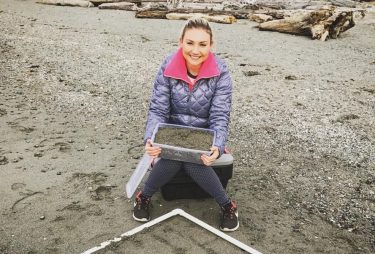
As part of a yearlong project, Frances Eshom-Arzadon visited 12 Puget Sound beaches to tally the number of nearly invisible bits of plastic, or microplastics. While the School of Oceanography major found Seattle-area beaches to be clean compared to some — on the Mediterranean Sea, for example — they’re still far from pristine.
Her findings also suggest that polar fleece and other synthetic fibers are the main source of plastic fragments on local shores. They enter the environment when fibers are shed in washing machines and then flow out of homes toward the Sound.
“Plastics can harm marine life and can in some cases be the primary cause of death. Smaller organisms ingest microplastics, and then larger organisms, including humans, consume it indirectly,” said Eshom-Arzadon, who graduated in June.
Read more at UW Today »
